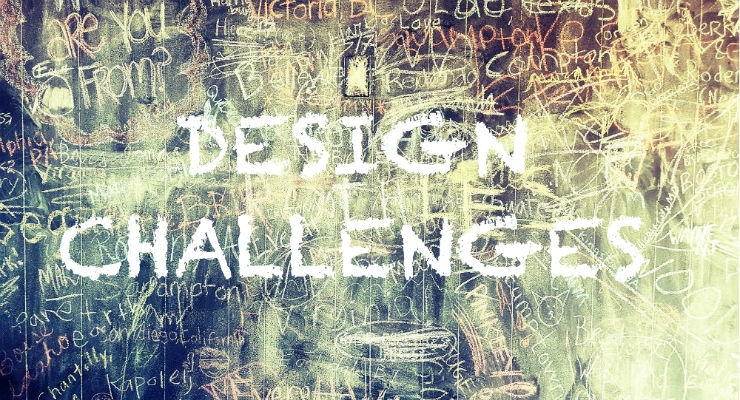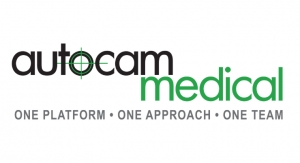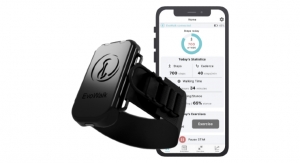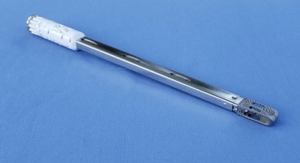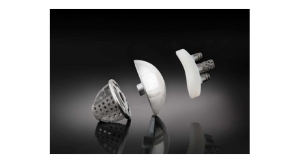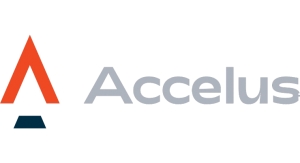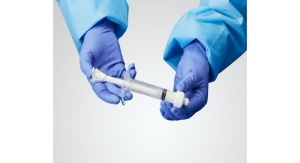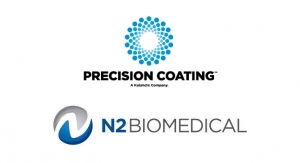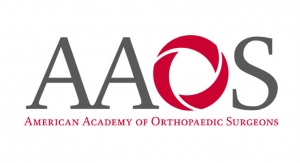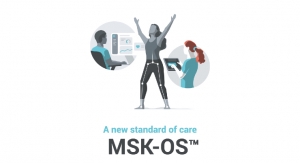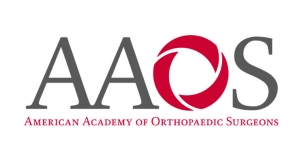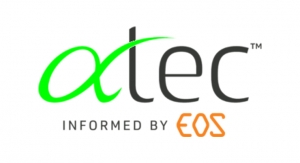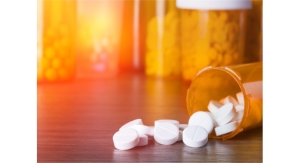Sam Brusco, Associate Editor10.02.17
Ben Ryan’s son Sol was born relatively healthy in March 2015, with one unfortunate development—complications during childbirth resulted in the amputation of his lower left arm. Although he would keep one inch of his lower arm, Sol would have to wait three years for a myoelectric (powered) prosthetic arm from the NHS, or, alternatively, wait one year for a non-functional prosthesis. After Ben noticed his son’s left arm losing responsiveness, he took matters into his own hands.
He then launched into exhaustive research on infant development, and discovered when children are fit for a prosthetic after the age of 2, higher rejection rates occur, according to a 2005 study published in the Journal of Prosthetics and Orthotics. The study also determined early fitting of functional devices correlates with continued prosthetic use throughout childhood. Considering all this, Ben designed a customized 3D-printed hydraulic prosthetic for Sol using PolyJet 3D printing technology, and founded the startup Ambionics to commercialize his invention. Ben’s design process faced a challenge other orthopedic device designers are all too familiar with—a non-traditional (in this case, pediatric) patient.
“This is a very innovative and ambitious project and it’s been inspiring to work with Ben on it,” said Paul Sohi, a product design expert at Autodesk, whose Fusion 360 software was used to develop the design. “It is amazing that despite Ben having no real background in product design, he’s effectively taught himself enough to create something that will not only help his own son Sol, but in Ambionics, potentially others facing the same challenges too.”
Ben practiced with prototypes of the design, 3D printing flexible actuators and a power-splitting unit in the process. One important factor in his design was leaving batteries out of the device in order to make it body-powered, removing the necessity for recharging and further promoting adherence.
Patient anatomy, aesthetic, and usability concerns for product design like Ben’s are just a few of the challenges facing orthopedic technology designers. Those designing musculoskeletal devices must also contend with hurdles like balancing cost pressures and time-to-market, a dynamic regulatory landscape (especially when developing orthopedic implants, which are Class III devices), and novel fabrication methods like additive manufacturing. In order to better grasp the factors and challenges affecting orthopedic design, Orthopedic Design & Technology spoke with half a dozen orthopedic design professionals over the past few weeks. They included:
Brandon Beckendorf, director of engineering of Orchid Design, a Shelton, Conn.-based based subsidiary of Orchid Orthopedic Solutions, a Lansing, Mich.-based provider of design and development services to the medical device industry.
Nick Ouwekerk, a senior project manager at the Staunton, Va., facility of Cadence Inc., a full-service contract manufacturer and supplier of advanced products, technologies, and services to medical device, life science, and industrial companies worldwide.
James Schultz, executive vice president, sales and marketing, of ECA Medical Instruments, a Thousand Oaks, Calif.-based designer and manufacturer of single-procedure torque-limiting and fixed-driver surgical instruments and procedural kits.
Victoria Trafka, president and lead engineer; and Richard Brown, vice president and senior engineer, of Engineering & Quality Solutions Inc., a Colorado Springs, Colo.-based medtech consulting firm with particular expertise in orthopedics.
Angel Wong, marketing manager of AC Mould, a Shenzhen, China-based contract manufacturer specializing in orthopedic braces, molds, and molding.
Sam Brusco: What are the current trends in orthopedic R&D and design?
Brandon Beckendorf: I have noticed a trend toward patient-matched devices. It started with patient-matched arthroplasty devices, and has moved toward patient-matched trauma and fracture fixation devices. It’s challenging for companies because a different skill set is needed to develop and sustain the product offerings as compared to traditional orthopedic devices.
Nick Ouwekerk: Product differentiation is a notable trend—better and faster procedures are the drivers. I also see more enabling add-ons to make the procedure completely managed by one OEM.
James Schultz: OEMs are keen to design and develop very specific implants, instruments, and packaging systems that yield high return on investment (ROI) and put up barriers to competition. They rely more on their strategic partners and supply chain to take ownership of the design and development process, including tests and validations the OEM traditionally does not do efficiently and in a timely manner. Speed-to-market is becoming more and more important, and design tools—be they software or physical models—allow for faster new product development than ever before at reduced up-front and life cycle costs.
Victoria Trafka: We’re starting to see more orthopedic and spine startups forming again, and those companies initially focus on niche products like an improved pedicle screw or a hammertoe implant. Rather than a broad system, they’re developing a device to meet a specific patient need. They have great ideas for “a better mouse trap,” they’ve secured funding, and have aggressive timelines. This is resulting in rapid development of next-generation products, which we haven’t seen in orthopedics in several years. It’s going to be exciting to see these innovative orthopedic products hitting the market in the coming years.
Angel Wong: R&D and design remain very important steps to set the foundation of a successful orthopedic device. Take orthopedic braces, for example—many next-generation products come out, yet the ones standing out from the competition are usually those with more breakthroughs in R&D and design empowering the products. This can be achieved through better user experience or “resetting” certain technology trends, a more appealing design, improvements to stabilization, or more comfort with innovative structures, materials, or processes.
Brusco: What are the design challenges facing R&D teams and orthopedic designers? How are companies overcoming these challenges?
Beckendorf: Manufacturing technology advances have led to more complex device designs, which can result in significant challenges for manufacturing and inspection teams. Having an experienced design transfer team can make a world of difference to ensure the customer’s quality needs are being satisfied.
Ouwekerk: Understanding the market drivers with more managed healthcare is a challenge. Purchasing groups, insurance providers, and healthcare economics drive the market beyond the direct medical benefits. By chasing so many stakeholders, it is difficult to find solutions that work for all of them, especially the patient.
Schultz: It seems every company is faced with similar challenges: doing more with less; accelerating time-to-market for new products; minimizing regulatory burden and costs to field new implants, instruments, and systems; and bringing differentiated products to market that provide measurable ROI. “Faster, cheaper, better” is taking hold in the industry and products are not being advanced unless they have specific returns providing competitive advantage. OEMs are seeking incremental revenue opportunities to create shareholder value. Companies like ours partner with OEM implant firms to address their cost and time-to-market concerns by serving as their one-stop shop for instruments and kits, which include precision single-procedure torque-limiters providing torque accuracy and a pristine instrument for every patient and sterile-packed, surgery-ready instrument sets that save them development costs and help them get to market in less than half the time of traditional process steps.
Trafka: The biggest challenge facing orthopedic R&D teams today is there are simply more projects than experienced engineers. In the last year, device companies across the board have approved new projects and accelerated timelines for existing projects; as a result, there’s suddenly a shortage of resources to work on them. We’ve worked with several clients whose engineers are working seven days a week and/or 10-plus hours a day and still can’t keep up with deadlines. Companies deal with this problem by either reluctantly throttling the flow of projects or outsourcing development tasks. The products getting precious resources first are those with time-sensitive market launch windows.
Wong: One of the design challenges facing R&D teams is the proper combination of product design, manufacturing feasibility, and cost performance. Using orthopedic braces again as an example, a bracing product usually consists of multiple components and materials—plastic parts, metal parts, soft goods, silicone parts, etc. Multiple manufacturing processes can be included for different parts, including injection molding, die-casting, stamping, hot pressing, ultrasonic welding, radiofrequency welding, and thermosetting.
Experienced mechanical designers, who have a firm background both in design and manufacturing, could handle the design more efficiently to design the product for function, comfort, and aesthetics—and at the same time keep it practical for different manufacturing processes at reasonable costs. On the contrary, an appealing product design may require many modifications to make it compatible with a manufacturing method, and must decide whether the cost makes sense. OEM customers and contract manufacturers usually overcome this with joint efforts from each’s R&D teams. To address this, we use a design for manufacture (DFM) study after receiving the preliminary drawings from our customer. We initialize discussions with customers from the DFM report, and extend it to more details like modification proposals, process options, material recommendations, and cost ideas. Open and obstacle-free communications are mandatory as well, whether through emails, PowerPoint presentations, or online meetings.
Brusco: Can you share one of the most challenging design obstacles you have faced in the development of orthopedic technology? How was the challenge overcome?
Ouwekerk: One challenge we faced was coupling an improved performance base of products with lower cost manufacturing methods. This, coupled with the pressure to get products out, stresses ways to improve processes and puts a huge burden on doing riskier, higher reward manufacturing development. Due to time and investment pressures, most opt for incremental improvements that yield marginal improvements.
Schultz: We try to apply the maximum use of polymers to achieve clinically robust instrumentation for single-procedure instrument sets or complete procedural kits. Sometimes you’re pushing the envelope on material strength, interfaces, and overall capabilities to achieve a winning design ready to be tested, validated, and put into the market. We produce some high torque static and power-based torque-limiting instruments with novel designs. Achieving that balance of strength and cost/benefit is always a challenge, but as single-procedure instrument and kit experts, it’s that collaborative effort with our OEM implant firms that yields the winning results and products that increase their sales and drive out both upfront and lifecycle costs.
Trafka: Surprisingly, many orthopedic company managers and executives are unaware or underestimate the impact of U.S. Food and Drug Administration (FDA) regulations surrounding design and development activities. These design controls are in place to ensure design integrity through planning and checks and balances. EQS has helped on multiple projects where the designs are complete or the product is ready for launch and someone realized proper design controls had not been followed, or verification and validation hadn’t been successfully carried out. The answer at that point is to stop and go back to complete those missing steps, which is costly and delays launch. Ultimately, more education and training is needed within the industry to stress the importance of compliance with regulations and how these design activities provide for safer and more reliable devices.
Wong: One challenge we had was to design an outer thermoplastic polyurethane (TPU) part to overmold onto two substrate parts on an orthopedic brace product. Normally, overmolding involves one part covering a substrate part, seldom covering multiple substrate parts in parallel (at that point, we never heard of any successful cases of this.) The two substrate parts were not the same material: one was polypropylene, the other was softer TPU. This made it more challenging, because during overmolding the melted overmolding plastic flow can push the two parts out of position, and even after they're in place it's challenging to find an outer TPU material that bonds well with both substrate parts. We overcame it step by step. We first slightly modified the parts’ interface areas to reduce the risk of substrate parts being incorrectly positioned during overmolding. We also applied glue to bond the two substrate parts before overmolding. After accomplishing the overmolding, we modified the parts a little more to use liquid nails, and ended up saving glue permanently. We then modified the structure of overmolded TPU later to improve the bond. In parallel, we made a simple tool to test different material combinations, and finally found the right materials for a robust overmolding bond.
Brusco: What design strategies can be taken in order to reduce development costs?
Beckendorf: It starts with ensuring the true voice of the customer (VOC) is captured and utilized as the basis for the development requirements. I’ve seen teams struggle with this, which leads to many expensive change requests later in the project. Also, getting the end user involved in evaluating multiple rapid prototypes early in the process can cut the costs associated with more expensive prototypes down the road. Beyond that, leveraging DFx (design for excellence) principals and incorporating them early in the development process can help reduce both unit and project cost.
Trafka: There’s always a balancing act between time and cost in product development. Companies want to reduce development costs, but also get to market very quickly. The strategies available to reduce costs usually add time to the development cycle. For instance, grouping different devices together in one larger project, rather than multiple smaller projects, can often reduce overall cost. If a spine company plans to develop both cervical and lumbar cages, these two devices can be combined into one project, reducing overall costs for project management, testing, and regulatory submissions. However, this approach has risks; if development of one device lags behind, the other device is delayed as well.
Wong: Having verifications to go along with the design is an efficient method to reduce orthopedic device development costs. One way to verify a design involves making rapid prototypes to quickly test the idea. Another important course of action is to run enough tests to verify the process is robust and repeatable, which will help with consistent quality control and bring down the costs of defects or scrap.
Brusco: What are some of the most useful tools to design orthopedic devices, and how do they facilitate development?
Ouwekerk: Solid modeling has improved the design understanding of products. The technology has allowed better views of part interactions and system designs, but so much more can be done. Few take the extra time to validate the models/simulations to ensure they are viable for iteration and optimization. The efforts to do such take 20x more effort, which would drive time-to-revenue down. However, it would improve time-to-revenue on the second generation or platform products.
Schultz: Contemporary tool kits for product design and development are the most efficient and effective ever. You can design and test a wider range of instrument options and optimize the design, ergonomics, navigation, instrument stack up, and more before you ever build a physical model. A variety of solid model software and finite element analysis (FEA) software packages offer significant productivity advantages and accelerate time-to-market. You can simulate stresses, loads, and boundary conditions out to a million degrees of freedom in a virtual world, which offers huge time and cost savings. Physical models today can be quickly and relatively inexpensively 3D printed to produce excellent prototype instruments for surgeon fit and procedure value. Mold flow software helps reduce risk of mold design and product development. It’s a great time to be a biomedical engineer and product designer. You can do concurrent engineering as a standard practice today and still do a great job of managing risks.
Trafka: I find the most useful tool in development is frequent prototyping and testing along the development path. Drawings and 3D models are great, but nothing compares to a part in hand or in the test lab. Many designers get tunnel vision around building and testing a fully designed final product. This happens very late in the development cycle, and when challenges arise a lot of time and money has already been spent. The answer is to prototype and test certain aspects of the design to get a preview of those features and functions. So much insight can be gained by early evaluation of a product mock-up or simplified prototype.
Brusco: What strains have FDA regulations placed on orthopedic design strategies?
Richard Brown: Additive manufacturing continues to be prevalent in orthopedic devices, but since the FDA released draft guidance, “Technical Considerations for Additive Manufactured Devices” in 2016, companies have scrambled to catch up to FDA expectations. Products in development or regulatory submission were reviewed for compliance, and most of those projects required additional design or manufacturing work to meet quality standards. For example, many medical device companies had relied on the contract manufacturer to create and control the internal lattice structure of a printed device, and these features weren’t documented in the design files. With the new guidance, these features needed to be specified and controlled. The ultimate effect was many additive manufactured projects missed planned launch dates and budgets because sponsors had to reevaluate and redesign to meet the new guidelines.
Ouwekerk: The regulations themselves have not put on as much strain as the liability fears. Many OEMs have seen 483 warning letters from the FDA—which they react to—but the biggest worry has to be the financial impact of litigation due to all the publicity and negative press generated from the actual issues.
Brusco: What innovative orthopedic designs has additive manufacturing made possible? Which designs still present a challenge?
Brown: Additive manufacturing technology has provided a major improvement in osseointegration of spinal interbody fusion devices, which had been a persistent problem in this field. However, the porous surface that improves osseointegration also introduces new issues with device fatigue in testing. The location and size of the surface pores dramatically affects crack propagation and many designers and manufacturers hadn’t considered this. Right now, predicting and controlling the negative impacts of surface porosity on device fatigue is a huge challenge.
Ouwekerk: It has helped with enabling elements such as alignment fixtures and guides. Actual products that stay in the body haven’t been that successful, as the manufacturing methods aren’t mature enough to reduce risk on materials, biocompatibility, and sterilization techniques.
Brusco: What challenges do you anticipate to arise for orthopedic design in the next five years?
Brown: Patients and surgeons are striving for better surgical outcomes, so the challenge is satisfying those expectations. These attitudes will drive orthopedic device design in the coming years. Patients are becoming more educated about their medical conditions and treatment options. A great example is knee replacement. Formerly, knee replacement patients’ main goal was to reduce pain and regain some mobility. Today, these patients expect to eliminate pain and return to an active lifestyle. These expectations have resulted in the introduction of a variety of new knee implants, like those designed for specific ethnic groups, activity levels, and even patient-specific devices.
Ouwekerk: I predict cost pressures along with additional risk mitigation practices to reduce liability and FDA regulations. Both work against each other, which is very challenging. Small startup companies ignore these risks better, since they have less of an image to protect. Large OEMs may move to acquisition modes to reduce their risks until the product’s performance has data to support efficacy and the morbidity/mortality values assigned to them.
Wong: I expect to see designs for orthopedic devices that are smarter, more portable, multi-functional, and last but not least—recyclable. Environmental issues are spreading globally and receiving more attention. Sooner or later, more regulations for environmental protection will be embedded in new product development.
He then launched into exhaustive research on infant development, and discovered when children are fit for a prosthetic after the age of 2, higher rejection rates occur, according to a 2005 study published in the Journal of Prosthetics and Orthotics. The study also determined early fitting of functional devices correlates with continued prosthetic use throughout childhood. Considering all this, Ben designed a customized 3D-printed hydraulic prosthetic for Sol using PolyJet 3D printing technology, and founded the startup Ambionics to commercialize his invention. Ben’s design process faced a challenge other orthopedic device designers are all too familiar with—a non-traditional (in this case, pediatric) patient.
“This is a very innovative and ambitious project and it’s been inspiring to work with Ben on it,” said Paul Sohi, a product design expert at Autodesk, whose Fusion 360 software was used to develop the design. “It is amazing that despite Ben having no real background in product design, he’s effectively taught himself enough to create something that will not only help his own son Sol, but in Ambionics, potentially others facing the same challenges too.”
Ben practiced with prototypes of the design, 3D printing flexible actuators and a power-splitting unit in the process. One important factor in his design was leaving batteries out of the device in order to make it body-powered, removing the necessity for recharging and further promoting adherence.
Patient anatomy, aesthetic, and usability concerns for product design like Ben’s are just a few of the challenges facing orthopedic technology designers. Those designing musculoskeletal devices must also contend with hurdles like balancing cost pressures and time-to-market, a dynamic regulatory landscape (especially when developing orthopedic implants, which are Class III devices), and novel fabrication methods like additive manufacturing. In order to better grasp the factors and challenges affecting orthopedic design, Orthopedic Design & Technology spoke with half a dozen orthopedic design professionals over the past few weeks. They included:
Brandon Beckendorf, director of engineering of Orchid Design, a Shelton, Conn.-based based subsidiary of Orchid Orthopedic Solutions, a Lansing, Mich.-based provider of design and development services to the medical device industry.
Nick Ouwekerk, a senior project manager at the Staunton, Va., facility of Cadence Inc., a full-service contract manufacturer and supplier of advanced products, technologies, and services to medical device, life science, and industrial companies worldwide.
James Schultz, executive vice president, sales and marketing, of ECA Medical Instruments, a Thousand Oaks, Calif.-based designer and manufacturer of single-procedure torque-limiting and fixed-driver surgical instruments and procedural kits.
Victoria Trafka, president and lead engineer; and Richard Brown, vice president and senior engineer, of Engineering & Quality Solutions Inc., a Colorado Springs, Colo.-based medtech consulting firm with particular expertise in orthopedics.
Angel Wong, marketing manager of AC Mould, a Shenzhen, China-based contract manufacturer specializing in orthopedic braces, molds, and molding.
Sam Brusco: What are the current trends in orthopedic R&D and design?
Brandon Beckendorf: I have noticed a trend toward patient-matched devices. It started with patient-matched arthroplasty devices, and has moved toward patient-matched trauma and fracture fixation devices. It’s challenging for companies because a different skill set is needed to develop and sustain the product offerings as compared to traditional orthopedic devices.
Nick Ouwekerk: Product differentiation is a notable trend—better and faster procedures are the drivers. I also see more enabling add-ons to make the procedure completely managed by one OEM.
James Schultz: OEMs are keen to design and develop very specific implants, instruments, and packaging systems that yield high return on investment (ROI) and put up barriers to competition. They rely more on their strategic partners and supply chain to take ownership of the design and development process, including tests and validations the OEM traditionally does not do efficiently and in a timely manner. Speed-to-market is becoming more and more important, and design tools—be they software or physical models—allow for faster new product development than ever before at reduced up-front and life cycle costs.
Victoria Trafka: We’re starting to see more orthopedic and spine startups forming again, and those companies initially focus on niche products like an improved pedicle screw or a hammertoe implant. Rather than a broad system, they’re developing a device to meet a specific patient need. They have great ideas for “a better mouse trap,” they’ve secured funding, and have aggressive timelines. This is resulting in rapid development of next-generation products, which we haven’t seen in orthopedics in several years. It’s going to be exciting to see these innovative orthopedic products hitting the market in the coming years.
Angel Wong: R&D and design remain very important steps to set the foundation of a successful orthopedic device. Take orthopedic braces, for example—many next-generation products come out, yet the ones standing out from the competition are usually those with more breakthroughs in R&D and design empowering the products. This can be achieved through better user experience or “resetting” certain technology trends, a more appealing design, improvements to stabilization, or more comfort with innovative structures, materials, or processes.
Brusco: What are the design challenges facing R&D teams and orthopedic designers? How are companies overcoming these challenges?
Beckendorf: Manufacturing technology advances have led to more complex device designs, which can result in significant challenges for manufacturing and inspection teams. Having an experienced design transfer team can make a world of difference to ensure the customer’s quality needs are being satisfied.
Ouwekerk: Understanding the market drivers with more managed healthcare is a challenge. Purchasing groups, insurance providers, and healthcare economics drive the market beyond the direct medical benefits. By chasing so many stakeholders, it is difficult to find solutions that work for all of them, especially the patient.
Schultz: It seems every company is faced with similar challenges: doing more with less; accelerating time-to-market for new products; minimizing regulatory burden and costs to field new implants, instruments, and systems; and bringing differentiated products to market that provide measurable ROI. “Faster, cheaper, better” is taking hold in the industry and products are not being advanced unless they have specific returns providing competitive advantage. OEMs are seeking incremental revenue opportunities to create shareholder value. Companies like ours partner with OEM implant firms to address their cost and time-to-market concerns by serving as their one-stop shop for instruments and kits, which include precision single-procedure torque-limiters providing torque accuracy and a pristine instrument for every patient and sterile-packed, surgery-ready instrument sets that save them development costs and help them get to market in less than half the time of traditional process steps.
Trafka: The biggest challenge facing orthopedic R&D teams today is there are simply more projects than experienced engineers. In the last year, device companies across the board have approved new projects and accelerated timelines for existing projects; as a result, there’s suddenly a shortage of resources to work on them. We’ve worked with several clients whose engineers are working seven days a week and/or 10-plus hours a day and still can’t keep up with deadlines. Companies deal with this problem by either reluctantly throttling the flow of projects or outsourcing development tasks. The products getting precious resources first are those with time-sensitive market launch windows.
Wong: One of the design challenges facing R&D teams is the proper combination of product design, manufacturing feasibility, and cost performance. Using orthopedic braces again as an example, a bracing product usually consists of multiple components and materials—plastic parts, metal parts, soft goods, silicone parts, etc. Multiple manufacturing processes can be included for different parts, including injection molding, die-casting, stamping, hot pressing, ultrasonic welding, radiofrequency welding, and thermosetting.
Experienced mechanical designers, who have a firm background both in design and manufacturing, could handle the design more efficiently to design the product for function, comfort, and aesthetics—and at the same time keep it practical for different manufacturing processes at reasonable costs. On the contrary, an appealing product design may require many modifications to make it compatible with a manufacturing method, and must decide whether the cost makes sense. OEM customers and contract manufacturers usually overcome this with joint efforts from each’s R&D teams. To address this, we use a design for manufacture (DFM) study after receiving the preliminary drawings from our customer. We initialize discussions with customers from the DFM report, and extend it to more details like modification proposals, process options, material recommendations, and cost ideas. Open and obstacle-free communications are mandatory as well, whether through emails, PowerPoint presentations, or online meetings.
Brusco: Can you share one of the most challenging design obstacles you have faced in the development of orthopedic technology? How was the challenge overcome?
Ouwekerk: One challenge we faced was coupling an improved performance base of products with lower cost manufacturing methods. This, coupled with the pressure to get products out, stresses ways to improve processes and puts a huge burden on doing riskier, higher reward manufacturing development. Due to time and investment pressures, most opt for incremental improvements that yield marginal improvements.
Schultz: We try to apply the maximum use of polymers to achieve clinically robust instrumentation for single-procedure instrument sets or complete procedural kits. Sometimes you’re pushing the envelope on material strength, interfaces, and overall capabilities to achieve a winning design ready to be tested, validated, and put into the market. We produce some high torque static and power-based torque-limiting instruments with novel designs. Achieving that balance of strength and cost/benefit is always a challenge, but as single-procedure instrument and kit experts, it’s that collaborative effort with our OEM implant firms that yields the winning results and products that increase their sales and drive out both upfront and lifecycle costs.
Trafka: Surprisingly, many orthopedic company managers and executives are unaware or underestimate the impact of U.S. Food and Drug Administration (FDA) regulations surrounding design and development activities. These design controls are in place to ensure design integrity through planning and checks and balances. EQS has helped on multiple projects where the designs are complete or the product is ready for launch and someone realized proper design controls had not been followed, or verification and validation hadn’t been successfully carried out. The answer at that point is to stop and go back to complete those missing steps, which is costly and delays launch. Ultimately, more education and training is needed within the industry to stress the importance of compliance with regulations and how these design activities provide for safer and more reliable devices.
Wong: One challenge we had was to design an outer thermoplastic polyurethane (TPU) part to overmold onto two substrate parts on an orthopedic brace product. Normally, overmolding involves one part covering a substrate part, seldom covering multiple substrate parts in parallel (at that point, we never heard of any successful cases of this.) The two substrate parts were not the same material: one was polypropylene, the other was softer TPU. This made it more challenging, because during overmolding the melted overmolding plastic flow can push the two parts out of position, and even after they're in place it's challenging to find an outer TPU material that bonds well with both substrate parts. We overcame it step by step. We first slightly modified the parts’ interface areas to reduce the risk of substrate parts being incorrectly positioned during overmolding. We also applied glue to bond the two substrate parts before overmolding. After accomplishing the overmolding, we modified the parts a little more to use liquid nails, and ended up saving glue permanently. We then modified the structure of overmolded TPU later to improve the bond. In parallel, we made a simple tool to test different material combinations, and finally found the right materials for a robust overmolding bond.
Brusco: What design strategies can be taken in order to reduce development costs?
Beckendorf: It starts with ensuring the true voice of the customer (VOC) is captured and utilized as the basis for the development requirements. I’ve seen teams struggle with this, which leads to many expensive change requests later in the project. Also, getting the end user involved in evaluating multiple rapid prototypes early in the process can cut the costs associated with more expensive prototypes down the road. Beyond that, leveraging DFx (design for excellence) principals and incorporating them early in the development process can help reduce both unit and project cost.
Trafka: There’s always a balancing act between time and cost in product development. Companies want to reduce development costs, but also get to market very quickly. The strategies available to reduce costs usually add time to the development cycle. For instance, grouping different devices together in one larger project, rather than multiple smaller projects, can often reduce overall cost. If a spine company plans to develop both cervical and lumbar cages, these two devices can be combined into one project, reducing overall costs for project management, testing, and regulatory submissions. However, this approach has risks; if development of one device lags behind, the other device is delayed as well.
Wong: Having verifications to go along with the design is an efficient method to reduce orthopedic device development costs. One way to verify a design involves making rapid prototypes to quickly test the idea. Another important course of action is to run enough tests to verify the process is robust and repeatable, which will help with consistent quality control and bring down the costs of defects or scrap.
Brusco: What are some of the most useful tools to design orthopedic devices, and how do they facilitate development?
Ouwekerk: Solid modeling has improved the design understanding of products. The technology has allowed better views of part interactions and system designs, but so much more can be done. Few take the extra time to validate the models/simulations to ensure they are viable for iteration and optimization. The efforts to do such take 20x more effort, which would drive time-to-revenue down. However, it would improve time-to-revenue on the second generation or platform products.
Schultz: Contemporary tool kits for product design and development are the most efficient and effective ever. You can design and test a wider range of instrument options and optimize the design, ergonomics, navigation, instrument stack up, and more before you ever build a physical model. A variety of solid model software and finite element analysis (FEA) software packages offer significant productivity advantages and accelerate time-to-market. You can simulate stresses, loads, and boundary conditions out to a million degrees of freedom in a virtual world, which offers huge time and cost savings. Physical models today can be quickly and relatively inexpensively 3D printed to produce excellent prototype instruments for surgeon fit and procedure value. Mold flow software helps reduce risk of mold design and product development. It’s a great time to be a biomedical engineer and product designer. You can do concurrent engineering as a standard practice today and still do a great job of managing risks.
Trafka: I find the most useful tool in development is frequent prototyping and testing along the development path. Drawings and 3D models are great, but nothing compares to a part in hand or in the test lab. Many designers get tunnel vision around building and testing a fully designed final product. This happens very late in the development cycle, and when challenges arise a lot of time and money has already been spent. The answer is to prototype and test certain aspects of the design to get a preview of those features and functions. So much insight can be gained by early evaluation of a product mock-up or simplified prototype.
Brusco: What strains have FDA regulations placed on orthopedic design strategies?
Richard Brown: Additive manufacturing continues to be prevalent in orthopedic devices, but since the FDA released draft guidance, “Technical Considerations for Additive Manufactured Devices” in 2016, companies have scrambled to catch up to FDA expectations. Products in development or regulatory submission were reviewed for compliance, and most of those projects required additional design or manufacturing work to meet quality standards. For example, many medical device companies had relied on the contract manufacturer to create and control the internal lattice structure of a printed device, and these features weren’t documented in the design files. With the new guidance, these features needed to be specified and controlled. The ultimate effect was many additive manufactured projects missed planned launch dates and budgets because sponsors had to reevaluate and redesign to meet the new guidelines.
Ouwekerk: The regulations themselves have not put on as much strain as the liability fears. Many OEMs have seen 483 warning letters from the FDA—which they react to—but the biggest worry has to be the financial impact of litigation due to all the publicity and negative press generated from the actual issues.
Brusco: What innovative orthopedic designs has additive manufacturing made possible? Which designs still present a challenge?
Brown: Additive manufacturing technology has provided a major improvement in osseointegration of spinal interbody fusion devices, which had been a persistent problem in this field. However, the porous surface that improves osseointegration also introduces new issues with device fatigue in testing. The location and size of the surface pores dramatically affects crack propagation and many designers and manufacturers hadn’t considered this. Right now, predicting and controlling the negative impacts of surface porosity on device fatigue is a huge challenge.
Ouwekerk: It has helped with enabling elements such as alignment fixtures and guides. Actual products that stay in the body haven’t been that successful, as the manufacturing methods aren’t mature enough to reduce risk on materials, biocompatibility, and sterilization techniques.
Brusco: What challenges do you anticipate to arise for orthopedic design in the next five years?
Brown: Patients and surgeons are striving for better surgical outcomes, so the challenge is satisfying those expectations. These attitudes will drive orthopedic device design in the coming years. Patients are becoming more educated about their medical conditions and treatment options. A great example is knee replacement. Formerly, knee replacement patients’ main goal was to reduce pain and regain some mobility. Today, these patients expect to eliminate pain and return to an active lifestyle. These expectations have resulted in the introduction of a variety of new knee implants, like those designed for specific ethnic groups, activity levels, and even patient-specific devices.
Ouwekerk: I predict cost pressures along with additional risk mitigation practices to reduce liability and FDA regulations. Both work against each other, which is very challenging. Small startup companies ignore these risks better, since they have less of an image to protect. Large OEMs may move to acquisition modes to reduce their risks until the product’s performance has data to support efficacy and the morbidity/mortality values assigned to them.
Wong: I expect to see designs for orthopedic devices that are smarter, more portable, multi-functional, and last but not least—recyclable. Environmental issues are spreading globally and receiving more attention. Sooner or later, more regulations for environmental protection will be embedded in new product development.

